Mulberry
- Scientific Name: Morus nigra, Morus alba
- Plant Family: N.O. Artocapaceae
- Parts Used: Fruit, Bark and Root Bark
- Actions: Fruit – Antioxidant, Tonic, Laxative, Antidiabetic : Bark – Anthelmintic,
Black Mulberry is used as a laxative and to treat runny nose (rhinitis). A molasses made from black Mulberry is used for inflamed mouth sores during cancer treatment. Black Mulberry fruit also contains pectin, which might act as a laxative to help stool pass through the bowels.
Especially wholesome for those who are liable to heartburn, because it does not undergo acetous fermentation in the stomach. In France Mulberries are served at the beginning of a meal. Among the Romans the fruit was famous for maladies of the throat and windpipe.
The powdered leaves of the White Mulberry are most commonly used for medicine. The fruit can be used for food, either raw or cooked. The white Mulberry is sweet but bland, unlike the more intense flavor of the red Mulberry and black Mulberry.
White Mulberry is often tried in order to help treat diabetes. It is also tried for treating high cholesterol levels, high blood pressure, the common cold and its symptoms, muscle and joint pain such as from arthritis, constipation, dizziness, ringing in the ears, hair loss, and premature graying.
White Mulberry is native to China and is the food of silkworms. It was introduced into the United States in colonial times, during an attempt to establish a silk industry.
According to Chinese Medicine, Mulberry has a cooling thermal nature, sweet flavor, and builds the yin fluids and blood. It moistens the lungs and gastrointestinal tract, strengthens the liver and kidneys; treats wind conditions, including vertigo and paralysis.
Beneficial for blood deficiency signs such as anemia, prematurely gray hair, irritability, insomnia, and constipation from fluid dryness. It is also used in treating stomach ulcers, diabetes, dry cough, ringing in the ears and poor joint mobility.
At one time in the West, Mulberries were highly regarded as a general tonic for the whole system, which corresponds to some degree with the Chinese view of their tonic action on the kidneys, liver, and blood.
Mulberries are refreshing and have laxative properties and are well adapted to febrile cases. In former days, they used to be made into various conserves and drinks.
Mulberry was most often used for the preparation of a syrup, and is employed to flavor or color any other medicine. Syrupus Mori is a dark violet or purple liquid, with a faint odor and a refreshing, acid, saccharine taste. In amount of natural fruit sugar, the Mulberry is surpassed only by the Cherry and the Grape.
Mulberries are sometimes used in Devonshire for mixing with cider during fermentation, giving a pleasant taste and deep red color. In Greece, also, the fruit is subjected to fermentation, thereby furnishing an inebriating beverage.
Mulberries are full of nutrients and vitamins. A cup of raw Mulberries contains only 60 calories, making them a light and tasty snack, yet providing the nutrients necessary for the body.
Mulberries contain carbohydrates that convert sugar into glucose, thereby providing energy to the cells. Consuming Mulberries increases your iron intake and ensures ample supply of oxygen to the tissues.
Mulberries are rich in Vitamin K and C. Vitamin C increases tissue strength and boosts collagen synthesis. Vitamin K helps in bone tissue development and is an essential component for blood clotting.
They also contain Riboflavin (also known as B-2), which protects your tissues from free radicals and helps in transferring oxygen throughout the body.
Consuming any form of the Mulberry fruit – whether the fruit itself, its powder, or juice – is beneficial to you. You can even apply Mulberry extracts on your skin.
Appearance
The Common Mulberry is a handsome tree, 20 to 30 feet high, of rugged, picturesque appearance, forming a dense, spreading head of branches usually wider than the height of the tree, springing from a short, rough trunk.
Mulberries are related to figs and breadfruit. Technically, Mulberries are not single berries. Each Mulberry is a collection of berries on a common pulpy receptacle.
There are few trees better able to withstand the debilitating effects of the close atmosphere of small town gardens. Varieties include:
- White Mulberry (Morus alba) native to east Asia.
- Red Mulberry (Morus rubra) native to North America.
- Black Mulberry (Morus nigra) native to southwest Asia.
- Texas Mulberry (Morus microphylla) native to the United States and Mexico.
- Chinese Mulberry (Morus australis) native to the Southeast Asia.
- African Mulberry (Morus mesozygia) native to south and central Africa.
- French Mulberry (Callicarpa Americana) – a shrub 3 to 6 feet high, with bluish flowers and violet fruit, but the species is too tender for any but the mildest parts of Great Britain.
It is by no means unusual for a Mulberry tree to produce leaves of several different shapes, or differing considerably in outline.
The Chinese White Mulberry, cultivated in other countries as food for the silkworm, is even more variable in leafage than the Common Mulberry, and quite a score of different forms of leaf have been gathered from a single tree, and several from one shoot.
Both species contain in every part a milky juice, which will coagulate into a sort of Indian rubber. This has been thought to give tenacity to the filament spun by the silkworm.
While definitely helpful, Mulberry trees are notorious for their pollen production, which can well exceed the admissible count of 1500 in the spring season. It was precisely for this reason that the city administration of Tucson, Arizona, banned it in 1984. The city of Las Vegas, Nevada, followed suit citing the same reason in 1991, and El Paso, Texas, followed a year later in 1992. While some of these cities are contemplating doing away with this ban, that is bound to take some time as the risk involved in pretty high.
Medicinal Properties and Uses
Mulberries are very high in antioxidants, which help the body cleanse damaged cells which lead to many complications. They also contain large amounts of vitamin C as well as Vitamin K, Vitamin A, Vitamin E, really high levels of Iron, and Dietary Fiber which all help to give the body and mind incredible energy to live happy and healthy lives! They are also high in minerals like potassium, manganese, and magnesium and contain the B vitamins, B6, Niacin, Riboflavin, and Folic Acid.
Mulberries contain flavinoids and phyto-nutrients and are extremely high in anthocyanins which help to fight against cancer as well as reduce aging and neurological diseases, inflammation, diabetes, and bacterial infections.
The berries also contain resveratrol, a powerful blood flow increasing antioxidant which you have probably heard promoted through the wine industry as their new claim to fame. Resveratrol is a powerful healer for many conditions such as aging diseases, inflammation, and a number one go to as part of an herbal protocol for the treatment of lymes disease.
The bark of the Black Mulberry is reputed to be an anthelmintic, and was used to expel tape worm. The root-bark of M Indica and other species is much used in the East under the name of San-pai-p’i, as a diuretic and expectorant.
The Morinda tinctoria, or Indian Mulberry, is used by the African aborigines as a remedial agent, but there is no reliable evidence of its therapeutic value.
Gerard recommends the fruit of the Mulberry tree for use in all affections of the mouth and throat. He says:
“The barke of the root is bitter, hot and drie, and hath a scouring faculty: the decoction hereof doth open the stoppings of the liver and spleen, it purgeth the belly, and driveth fourth wormes.”
The juice of the American Red Mulberry may be substituted; it is less acid than the European, while that of the White Mulberry, native of China, is sweet, but rather insipid.
In the East, the Mulberry is most productive and useful. It is gathered when ripe, dried on the tops of the houses in the sun, and stored for winter use. In Cabul, it is pounded to a fine powder, and mixed with flour for bread.
A parasitic fungus growing on the old stems of Mulberry trees found in the island of Meshima, Japan, and called there Meshimakobu, brown outside and yellow inside, is used in Japan for medicine.
Preparations and Dosages
- Powdered White Mulberry Leaves:
The powdered leaves of white Mulberry seem to lower blood sugar in people who have type 2 diabetes. Taking 1 gram of the powdered leaf three times a day for 4 weeks decreased fasting blood sugar levels by 27%, compared with an 8% decrease with the diabetes medicine glyburide, 5 mg daily.
- Mulberry Syrup (Syrupus Mori)
The syrup is prepared by heating 50 fluid drachms of the expressed juice to boiling point, then cooling and filtering. Ninety drachms of sugar is then dissolved in the juice, which is warmed up again.
When once more cooled, 6 to 25 drachms of alcohol is added; the product should then measure about 100 drachms (20 fluid ounces).
The dose is 2 to 1 fluid drachm, but it is chiefly used as an additive rather than for its slightly laxative and expectorant qualities. Used as a gargle it will relieve sore throat.
- Doshab or Bakmaz (Mulberry syrup)
In Azerbaijan Mulberry syrup concentrate is known as “doshab” and “bakmaz.” To make the syrup, Mulberry juice is boiled until it has a consistency that’s much like honey.
While this syrup makes a tasty sweet, it is also used as a medicine to protect against diseases of the liver, gall bladder and heart.
To treat gallbladder infections, one is supposed to drink 2 tablespoons of bakmaz dissolved in half a glass of water, then lie down in bed on his or her right side. The treatment should be taken on an empty stomach, half an hour before breakfast.
Bakmaz is used to treat sore throats as well. In 1836, Abbasgulu Agha Bakikhanov, a famous scholar and son of Baku’s last khan, sent several bottles of bakmaz to his friend Dmitry Bibikov, who headed the Department of Foreign Trade in Russia.
Mulberry syrup is good for use against throat pain. Apply the syrup on the throat externally, cover with a cloth and keep this compress on all night. You can also drink the Mulberry syrup a little bit at a time or mix it with soup.
Health Benefits Of Mulberries
I realize that much of the following information (found at stylecraze) has already been noted above, but I did like the way it was explained, and I also found it easier to read and understand, so I decided to include it in it’s entirety. It almost sound too good to be true, but the stated benefits are based the nutritional properties of Mulberries.
- Improve Digestive Health
Mulberries are a boon for your stomach. They relieve constipation and are also an excellent way to lose weight. Mulberries contain a good amount of dietary fiber. Your body needs dietary fiber to facilitate proper digestion. It does so by bulking up a stool in the stomach and facilitating the movement of food through the digestive tract. This process helps in relieving constipation, bloating, and stomach cramps.
Healthy digestion helps in efficiently maintaining optimum weight. A research was conducted by Italy’s F. De Ritis Institute and the Catholic University of Sacred Heart to determine the weight loss capacity of Mulberries. It was found out that those who consumed Mulberries as part of a balanced diet plan of 1300 calories decreased to about 10% of their total body weight in nearly three months.
The researchers also noticed that the group which consumed Mulberries reduced drastically in the waist and thigh regions. So, all you people who want a slender waist and toned thighs, you know what to eat.
- Lower Cholesterol
Eating Mulberries is a good way to lower the levels of bad cholesterol in your body, which in turn helps in preventing cardiovascular problems.
- Control Blood Sugar Levels
White Mulberries, in particular, help in keeping a check on the sugar levels of the body. Certain chemicals present in white Mulberries are similar to the medicine used to treat type 2 diabetes.
These compounds in white Mulberry help in keeping the sugar levels of the body at an optimum range by slowly breaking down the sugars in the gut and allowing them to be absorbed slowly into the blood.
- Reduce Cancer Risk
If you are looking to protect yourself from cancer, then Mulberry is what you should be looking for. Mulberries are rich in antioxidants and phytonutrients that help in stopping the growth and spread of tumor cells and protect you from cancer.
Mulberries are full of anthocyanins that help in keeping cancer cells at bay. They also contain resveratrol, which has anti-cancer properties. Resveratrol cancer inhibiting properties help in fighting colon cancer, skin cancer, prostate cancer, and thyroid.
- Improve Blood Circulation
Mulberries improve blood flow through the body, control blood pressure, and cleanse the blood. The antioxidants present in Mulberries help in improving the function of the blood vessels by keeping them supple and dilated, which leads to blood pressure control as there is a free flow of blood from the heart to other parts of the body. Mulberries encourage the production of red blood cells as they are rich in iron.
Mulberries contain polyphenols that keep the blood vessels healthy. They also contain potassium, which lowers the blood pressure.
Mulberries have been used as a remedy for blood health since ages. Ancient Chinese medicine incorporated them in their blood tonics that were used to cleanse the blood and increase its production.
- Cure Anemia
Mulberries are great for curing anemia as they are rich in iron. They also cure the symptoms of anemia such as fatigue and dizziness.
- Better Heart Health
The fiber, antioxidants, and flavonoid content of Mulberries facilitate heart health. They help in maintaining a consistent flow of blood, thus preventing heart attacks and strokes. Mulberries are rich in polyphenols, which are considered healthy for the heart.
- Good For Vision
Like carrots, Mulberries too are good for your eyes. They improve your vision and protect your eyes from free radicals that are a cause of retinal degeneration and loss in eye sight. Mulberries contain zeaxanthin, which helps in reducing oxidative stress in the cells that form your eyes. The carotenoids present in Mulberries assist in preventing cataracts and macular degeneration.
- Promote Brain Health
Research suggests that Mulberries age-proof the brain, keeping it young and alert. They also provide the calcium needs of the brain, hence keeping it hale and healthy. Mulberry also makes for an excellent treatment to keep Alzheimer’s at bay.
- Improve Immunity
Mulberries help in improving the immune system by activating the macrophages through the alkaloids present in them. Macrophages keep the immune system alert at all times. Mulberries also contain Vitamin C, which is another immunity strengthening element.
- Build Bone Tissue
Mulberries contain Vitamin K, calcium, and iron, which is the best combination of nutrients to maintain and build strong bone tissues and bones. These nutrients help the bones reverse the signs of bone degradation and prevent bone disorders such as osteoporosis, arthritis, etc.
- Rich Source Of Antioxidants
Mulberries contain an abundance of antioxidants. They contain a high concentration of the powerful antioxidant resveratrol, which is a natural antibiotic and helps in reducing heart risks. It also keeps a check on the blood pressure.
- Prevent Flu And Cold
Flu and cold are a menace. Don’t you agree? Well, eating Mulberries could solve that problem for you. The white Mulberry fruit, in particular, has been used in folk remedies for cold. White Mulberries are considered to be an astringent, bactericide and tonic and work correctly to prevent and treat flu and cold. They also contain Vitamin C and flavonoids, which prevent cold and flu.
- Improve Liver Health
Mulberries can be used to make a blood tonic, because when consumed, they nourish and purify the blood in the liver. Mulberries have the ability to strengthen the liver, and also contain iron that works well to maintain the liver health.
- Are An Anti-Inflammatory Agent
The presence of resveratrol in Mulberries induce anti-inflammatory properties in it. Mulberries also contain anthocyanins that help in preventing inflammation. Mulberries are sometimes even used as a natural alternative to allopathic anti-inflammatory drugs.
- Effective Anti-Aging Agent
Mulberries have the ability to make you look young and fresh. They contain resveratrol, which protects the skin from harmful UV rays.
Mulberries are abundant in antioxidants, which are great anti-aging agents. They keep your skin blooming and free of wrinkles. The antioxidants in Mulberries such as beta-carotene neutralize the free radicals that damage skin and cause fine lines.
Mulberries also provide vitamins A, C and E, lack of which leads to wrinkles.
- Clear Out Dark Spots And Blemishes
The antioxidants in Mulberries prevent the occurrence of blemishes on the skin. Mulberries help regulate the melanin synthesis in your skin, which naturally clears off the dark spots. They contain antioxidants that moisturize, unclog pores, and remove toxins from your skin, keeping it fresh and vibrant. Mulberries effectively even out your skin and make it look naturally beautiful and healthy.
- Treat Dry And Sensitive Skin
Lack of Vitamins A and E cause dry skin. Mulberries are rich in those vitamins, and help in treating dry and delicate skin. They hydrate your skin from within. Mulberry root extracts soothe irritated skin.
- Make Skin Soft And Radiant
You can simply sit and eat a bowl of Mulberries every day to get soft and radiant skin because they are rich in minerals that provide elasticity, flexibility, and nourishment to the skin.
- Promote Hair Growth
The presence of antioxidants in Mulberries help in keeping your hair healthy, promote hair growth, and prevent breakage.
- Help In the Retention Of Natural Hair Color
Mulberries, in combination with some traditional Chinese herbs, can help in preventing early hair graying. The nutrients in Mulberries such as calcium, iron, Vitamin C, and B play a vital role in doing so.
Cultivation
Mulberry trees like a warm, well-drained, loamy soil, and the Black Mulberry is especially worth growing for its luxuriant leafage and picturesque form.
It can be increased by cuttings with the greatest ease. In February, cut off some branches of a fairly large size (the old writers say that pieces 8 feet long or more will grow) and insert a foot deep, where neither sun nor wind can freely penetrate.
Envelop the stem above the ground level with moss, all but the upper pair of buds, in order to check evaporation.
Branches broken down, but not detached, will usually take root if they touch the ground.
Layers made in the autumn will root in twelve months, and cuttings of the young wood taken off with a heel and planted deeply in a shady border late in the year will root slowly, but more quickly and surely if put into gentle heat under glass.
The Mulberry can also be increased by seeds, which, if sown in gentle heat, or in the open early in the year, will produce young seedlings by autumn.
Mulberry trees do not begin to bear fruit early in life, and few fruits can be expected from a tree before it is fifteen years of age. It is commonly said that the fruit of the oldest Mulberry trees is the best.
Mulberry trees are not easily killed, and old examples that have been reduced to a mere shell have been rejuvenated by careful pruning and cultivation.
Practical Uses
We can’t eat the leaves, but the ripe fruit is a great snack for humans, right off the tree. Mulberries are extremely juicy and have a refreshing, subacid, saccharine taste, but they do not have the fine aroma that distinguishes many fruits.
Of all the berries that exist, Mulberries have the highest content of antioxidants, making them healthy no matter how you prepare them.
These blackberry-like morsels provide 60 calories per cup, with 85 percent of your daily requirement of Vitamin C and 14 percent of your daily Iron. Make sure they are ripe and sweet, because under-ripe Mulberries can lead to serious reactions like vomiting, diarrhea, and hallucinations.
What else can you do with the ripe berries? Here are some handy uses for the first fruit of summer.
- Dry Them
Cover your dehydrator trays or a few window screens with these berries and dry them to create a sweet dried snack. For best results, apply a little Fruit Fresh or a similar vitamin C powder to discourage spoiling and spike the nutritional value.
Store the dried Mulberries in a breathable container like a paper bag, cloth sack, or wooden box to keep them from sweating and subsequently molding. Never eat any moldy dehydrated foods.
- Make Wine
Combine 2 pounds of Mulberries, 2 pounds of sugar, and 3 quarts of water in a stainless steel or enamel pot. Bring to a boil and keep boiling for 20 minutes. Cool the mixture to room temperature and pour through a strainer into a sanitized one-gallon glass jug. Top off with clean water if needed, and add red wine yeast when the liquid is 80 degrees Fahrenheit or cooler. Fit a water-filled wine lock to the jug mouth, and ferment in a dark, room-temperature spot for six weeks.
For best taste, decant the wine into bottles and age for a few months. Though you could enjoy the “new” wine right away.
- Bait Traps
In a survival situation (since trapping seasons are now closed), you could collect a few Mulberries and use them for trap bait in areas where they are scarce. Their strong sweet odor will draw in raccoons, opossums, and even skunks. Just don’t bait with Mulberries under a fruiting Mulberry tree, the animals will never go for your bait when there are plenty of undisturbed berries available.
- Make Syrup
Sweet Mulberry syrup is excellent over pancakes, ice cream, and other foods. Mash one pint of berries in a cooking pot, add 2 cups of white sugar, and bring the mix to a boil for 10 minutes. No water is needed as the berries are juicy enough. Stir constantly to prevent burning. While the mix is still hot, pour through a strainer into a clean jar.
This is your finished syrup! Store it in the fridge for up to two months. Discard after that, or if it grows mold.
- Use to Dye and Stain
Looking to add some color to one of your homemade projects? Black Mulberries provide a reddish-purple dye or stain that can work on wood, cloth, or leather. You can simply mash the berries and wipe them on the object you wish to dye, though this tends to wash out.
Instead, boil the mashed berries in a little water with a mordant like alum to make the colors brighter and allow them to stain deeper and better.
Collecting and Conserving
For all their deliciousness, Mulberries are delicate, perishable, labor-intensive to pick, and don’t all ripen at the same time. All of these factors contribute to the difficulty of commercially growing and harvesting these berries. They aren’t the kind of berry you’ll typically find in the grocery store, unless it’s a local specialty or gourmet outlet.
When they are ripe, you can harvest them by hand if you are lucky enough to have a tree. Place a tarp underneath the tree and gently shake the branches to loosen the ripe fruit. Some may come off, some may stay; they don’t all ripen at the same time, and some that are ripe may need a little coaxing off their stems.
The berries are very delicate and therefore need to be handled carefully so that they don’t break open – the stain won’t wash out.
Dried Mulberries are often sold at health food stores or natural, organic grocery chains, sometimes in the bulk section. They can also be purchased online in bulk.
- Storage
If you can manage not to eat them all, they’ll keep in the fridge for two to three days, unwashed, and in a covered container.
As the saying goes, when life gives you lemons, you make lemonade. And when Mulberry trees produce more fruit than you can consume, or perhaps you get lucky and score a surplus through your own devices (friends with trees, maybe?), you make jam. But there’s only so much you can make.
That’s where freezing comes in. These berries will keep for six months in the freezer. Pop them frozen into smoothies or prep them in a yogurt-granola parfait in the fridge, where they can defrost and their color and flavor will naturally permeate the yogurt.
Mulberries are only in season for a few weeks in late spring and early summer. The fruit is used to make pies and tarts, as well as wines and cordials. But because of the berry’s brief season, we can only enjoy their slightly tart and refreshing taste for a short amount of time—unless we can preserve them for later use.
Freezing is the easiest way to preserve Mulberries, and whether you use fresh or frozen Mulberries, the results will be delicious.
Mulberries almost always come off of the tree with a little bit of stem attached. You can leave on the stem—it will not affect the berry—or, you can take the time to remove the stem bits before freezing. No matter, follow a few steps to ensure your Mulberries are easy to use when needed.
- Wash the Mulberries
Before placing in the freezer, you need to wash the Mulberries; washing removes bacteria that could be lurking on the berries, such as salmonella, E. coli, or norovirus. Run the berries under cool water and let them drain for a few minutes in a colander.
- Single-Layer Freeze
Freezing the berries in a single layer will ensure that the berries will remain separate once they are frozen. Spread the whole, washed Mulberries in a single layer on a baking sheet or on plates. Freeze the fruit, uncovered, for at least 2 hours.
- Transfer to Freezer Containers
Once the berries are frozen, you can transfer them to freezer bags or containers. (It is recommended that you use BPA-free, non-plastic freezer containers.) Make sure to label and date the bags or containers; you can store Mulberries in the freezer for up to 6 months. They are still fine to eat after that, but their quality and flavor degrade over time.
- Ways to Use Frozen Mulberries
There are many ways you can use the frozen Mulberries, from smoothies to baked goods to jam. You can blend straight-out-of-the-freezer Mulberries with milk (or a non-dairy alternative), yogurt, and honey or another sweetener of your choice. The frozen berries will give the smoothie a thick, cold, milkshake-like texture.
You can also add still-frozen Mulberries to pancakes, muffins, and quick bread. Although the Mulberries will cook along with the rest of the ingredients, berries that start out frozen in these recipes will not bleed their color as much as fresh berries tend to do.
Frozen Mulberries are just as good as fresh for making Mulberry jam and other sweet preserve recipes. Stockpile them in the freezer during the harvest season, and get around to that jam project later when you have time.
- Using Thawed Mulberries
You can use the frozen Mulberries to make sorbet or ice cream, but you will need to thaw them before you transform them into a frozen dessert. You can also thaw frozen Mulberries and puree them to make a simple, flavorful sauce to spoon over yogurt, cake, or fresh fruit. If you think the sauce needs it, add a little honey or sugar and a small squeeze of lemon juice to intensify the Mulberry flavor.
- Nutritional Facts
A 3 1/2-ounce serving of raw Mulberries has 43 calories, can provide up to 44 percent of your daily value of vitamin C, and 14 percent of your iron needs. The fruit and leaves are sold in various forms as nutritional supplements. The mature plant contains significant amounts of resveratrol, particularly in the stem bark, which some speculate can lead to longevity.
Mulberry Jam
Here is a very old recipe for Mulberry Jam, as give in A Modern Herbal by M Grieve:
- Note: Unless very ripe Mulberries are used, the jam will have an acid taste.
Put 1 pound of Mulberries in a jar and stand it in a pan of water on the fire until the juice is extracted. Strain them, and put the juice into a preserving pan with 3 pounds of sugar.
Boil it and remove the scum.
Put in 3 pounds of very ripe Mulberries and let them stand in the syrup until thoroughly warm. Then set the pan back on the fire and boil them very gently for a short time, stirring all the time and taking care not to break the fruit.
Then take the pan off and let them stand in the syrup all night. Put the pan on the fire again in the morning and boil again gently until stiff.
Mulberry Sorbet
Sorbets make for a perfect ending to a meal or to eat away when you feel like having something ice-cream like but without the calories.
- 1 cup sugar
- 1 cup water
- 5 cups Mulberries
- 2 tablespoons Port Wine
Instructions:
Clean the Mulberries and set them aside. Boil sugar and water in a container with medium heat. Simmer it for 3 to 4 minutes.
Turn the heat off and let it cool. While the sugar syrup is cooling, pick off all the green stems from the Mulberries.
Blend the Mulberries and pour the sugar syrup on the Mulberry paste. Make it into a puree. Sieve the Mulberry puree to remove any residual seeds or stems.
Pour a bit of Port Wine into it and chill the mixture in the freezer for about an hour. Then, pour it into an ice cream maker and whip up a sorbet.
Cautions and Contraindications:
Unripe fruit and green parts of the plant have a white sap that may be toxic, stimulating, or mildly hallucinogenic.
- Mulberries are rich in potassium, which can cause complications for those suffering from kidney disorders.
- Black Mulberry seems to lower blood sugar levels. It might interfere with blood sugar control during and after surgery. Stop using black Mulberry at least 2 weeks before a scheduled surgery. Also, monitor your blood sugar closely if you are on diabetic medications to lower your blood sugar.
- Mulberries can cause allergic reactions in some people like skin rashes, itching, and swelling. People who are allergic to black Mulberry might also be allergic to fig.
Pregnant and breastfeeding women should consult their doctor before consuming White Mulberry Leaf preparations.
Magickal Uses
- Ruler: Mercury
- Type: Tree
- Folk Name: Blood of a Goose (tree sap)
- Magickal Form: Wood, Berries
Add the berries to success spells for insight and inspiration. A Mulberry leaf should be placed near the crib to protect the baby.
Sleep with Mulberry leaves under your pillows to have psychic dreams. Make a tea from the leaves and use the brew to draw protection sigils. Carry the leaves as a talisman for strength and courage. Meditate under the tree to sync your subtle bodies.
Use wood from this tree to craft a wand that will boost your willpower. A Mulberry wand will also bring more focus and clarity to ritual. It helps to center the practitioner, increase magickal awareness, and bring sudden insight, revelation, or Cosmic knowledge.
Mulberry Symbolism
Here are a few key words when it comes to the personality and symbolic meaning of this lovely tree:
- Caring
- Exploring
- Providing
- Nurturing
- Attraction
- Survivalist
- Adventurous
The Mulberry is typically a fast growing bush-tree, and it will quickly take over a domain when happy. By association, Mulberry tree people will expand, explore, seek, find and spread their wings to great lengths when living in the right environment.
Mulberries are such giving plants. They provide food for humans and animals alike. People connected to the Mulberry tree meaning, will have the same tendency to give, provide, protect and nurture others around them.
In this same light, Mulberries are natural magnets for all kinds of life. The lovely shade they provide and their delicious berries attract lots of interesting beings…from humans to birds to deer and more.
When connected to the Mulberry tree, we can also attract lots of interesting people, nature, experiences, opportunities. Mulberry people will be quite fortunate, and can be like a vortex…calling to themselves who and what they needs.
This is largely due to the Mulberry’s ability to remind us all about the understanding of give and take. The Mulberry shows us that as we give, energy will be given to us as well. It is the Law of Reciprocation, and he will have an innate understanding about this.
Mulberry Dreaming
There are many conflicting ideas about what Mulberries mean in dreams. This is what I found:
- Eating Mulberries in a dream mean increase in one’s earnings, praiseworthy religious assiduity, good faith, certitude and leading a healthy life.
- The Mulberry tree in a dream represents a wealthy person with many children.
- Mulberry in a dream also could mean borrowing money.
- A Mulberry tree in a dream also represents a wealthy and a generous man with a large family.
- Eating black Mulberry in a dream also means prosperity.
- Dreaming of eating Mulberry means windfall profits.
- Dreaming of Mulberry, that disease will prevent you from fulfilling your wish, and friends often visit you, hoping that your help can alleviate their pain and suffering.
- The woman dreamed of eating Mulberry, indicating that she could give birth to a child with great achievements in the future.
- Dreaming of eating Mulberry foreshadows something that is painful and disappointing.
- A pregnant woman dreaming of eating Mulberry, implies that she would have a noble child.
- If you are a married woman, you are about to conceive , or you will give birth to bright, intelligent children in the future, which will make your family prosper.
And then there was this confusing explanation:
This dream has good luck and bad luck. Those who dream of Mulberry trees must be young and have no blunders; those who dream of Mulberry trees who are thin have less interest and are better. Dreamed that if the Mulberry tree withered, the Lord’s good luck. Planting Mulberry trees is difficult to protect. Mulberry trees in the rain are difficult to eat. Body tied to Mulberry, internal heart injury.
History and Lore
According to a German folklore, the roots of Mulberry tree are often used by the devil to polish his boots (and therefore, these trees are associated with evil).
In China, the Mulberry is considered the World Tree that connects the Heavens, the Earth and the regions below.
There was a sacred grove of Mulberry trees planted outside the eastern gate of the early royal cities, and the tree was associated with this direction because as the “house” of the Mother of the Suns, the Sun rose every day by climbing up the Mulberry tree.
The wood of the tree was used to make bows that “shot” away evil influences that emanated from the compass points.
There is evidence that the Mulberry was revered in Islam too, since the tree can be found close to Muslim sanctuaries.
Mulberry paper is used as vessels for offerings in Shinto shrines. Japanese families often used Mulberries as a part of their family crests, and strips of the fiber were hung from sacred trees as prayers. The Mulberry leaves were also used to feed silk worms, who produced the fiber to make kimonos fit for the ruling class. In all of these capacities, the Mulberry represents support, nurturing and self-sacrifice.
The Romans ate Mulberries at their feasts, as we know from the Satires of Horace, who recommends that Mulberries be gathered before sunset.
We also find mention of the Mulberry in Ovid, who in the Metamorphoses refers to the legend of Pyramus and Thisbe, who were slain beneath its shade, the fruit being fabled to have thereby changed from white to deep red through absorbing their blood.
Pliny speaks of its employment in medicine and also describes its use in Egypt and Cyprus. He further relates:
“Of all the cultivated trees, the Mulberry is the last that buds, which it never does until the cold weather is past, and it is therefore called the wisest of trees. But when it begins to put forth buds, it dispatches the business in one night, and that with so much force, that their breaking forth may be evidently heard.”
It has been suggested that the generic name of the Mulberry, Morus, has been derived from the Latin word mora (delay), from this tardy expansion of the buds.
As the wisest of its fellows, the tree was dedicated by the Ancients to Minerva.
Sir Walter Scott relates in his famous story Ivanhoe that the Saxons made a favorite drink, Morat, from the juice of Mulberries and honey.
There are many famous Mulberry trees in England. Those of Syon House, Brentford, are of special historical interest and include what is reported to be the oldest tree of its kind in England, said to be introduced from Persia in 1548.
It is this particular and venerable tree which forms the subject of an illustration in London’s Aboretum and Fruticetum. Although a wreck compared to its former self, it is regarded as one of the largest Mulberry trees in the country. Its height is given by Loudon as 22 feet, and additional interest is attached to this tree, as it is said to have been planted by the botanist Turner.
In 1608 James I, being anxious to further the silk industry by introducing the culture of the silkworm into Britain, issued an edict encouraging the cultivation of Mulberry trees, but the attempt to rear silkworms in England proved unsuccessful, apparently because the Black Mulberry was cultivated in error, whereas the White Mulberry is the species on which the silkworm flourishes.
Shakespeare’s Famous Mulberry
Shakespeare is said to have taken a Mulberry tree from the Mulberry garden of James I, and planted it in his garden at New Place, Stratford-on-Avon, in 1609. This also was a Black Mulberry, “cultivated for its fruit, which is very wholesome and palatable; and not for its leaves, which are but little esteemed for silkworms.”
“The Tree,” Malone writes, “was celebrated in many a poem, one especially by Dibdin. But in about 1752, the then owner of New Place, the Rev, Mr. Gastrell, bought and pulled down the house and cut down Shakes’eare’s celebrated Mulberry tree, to save himself the trouble of showing it to those whose admiration of the poet led them to visit the ground on which it stood.”
The pieces were made into many snuff boxes and other mementoes of the tree, some of them being inscribed with the punning motto, “Memento Mori.”
Ten years afterwards, when the freedom of the city was presented to Garrick, the document was enclosed in a casket made from the wood of this tree. A cup was also made from it, and at the Shakespeare Jubilee, Garrick, holding the cup, recited verses, composed by himself in honor of the Mulberry tree planted by Shakespeare:
“Behold this fair goblet: ’twas carved from the tree
Which, oh, my sweet Shakespeare, was planted by thee!
As a relic I kiss it, and bow at thy shrine,
What comes from thy hand must be ever divine.”
“All shall yield to the Mulberry tree;
Bend to the blest Mulberry:
Matchless was he who planted thee,
And thou, like him, immortal shall be.”
A slip of it was grown by Garrick in his garden at Hampton Court, and a scion of the original tree is now growing in Shakespeare’s garden.
Other Uses
During the Angkorian age of the Khmer Empire of Southeast Asia, monks at Buddhist temples made paper from the bark of Mulberry trees. The paper was used to make books, known as kraing.
Tengujo is the thinnest paper in the world. It is produced in Japan and made with kozo (stems of Mulberry trees).
The wood of the White Mulberry is very flexible and durable and has been used to make tennis rackets, hockey sticks, furniture, and boats.
Tut araghi, a potent liqueur (vodka) made from Mulberry juice, is a Mulberry product that’s very popular – not only Azerbaijan, but also in Georgia and Armenia. It’s one of the national Azerbaijani versions of vodka.
Sources:
- Healing With Whole Foods
- Outdoor Life
- A Modern Herbal by M Grieve
- Azerbaijan
- Gardenerdy
- WebMD
- What’s Your Sign
- Wikipedia
- Stylecraze
- Return to Nature
- The Spruce Eats
One Response to Mulberry
Leave a Reply
Rennie Luttrull: queen-annes-lace-seeds
Rosanna: Spignel aka Bald Money
Annamarie Squatrito: Fumitory
EILEEN Klinghagen: Pumpkin
Mahmudul Hasan: Celery
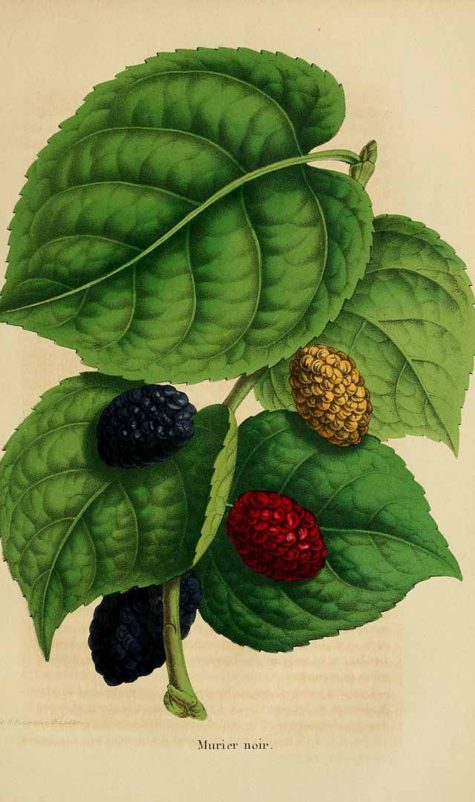
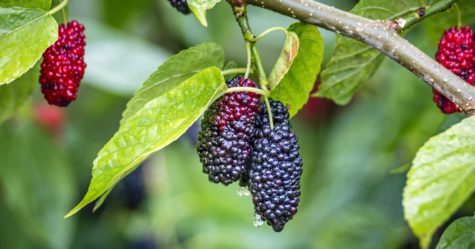
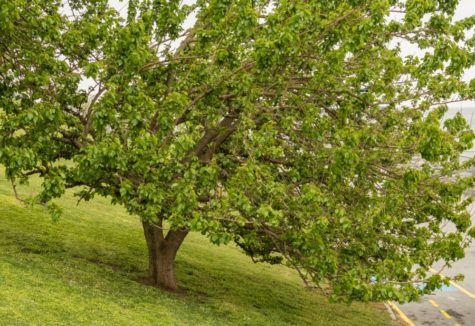
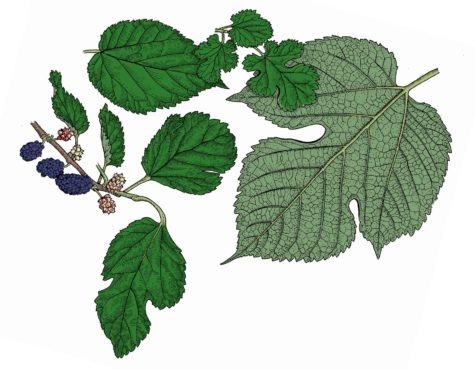
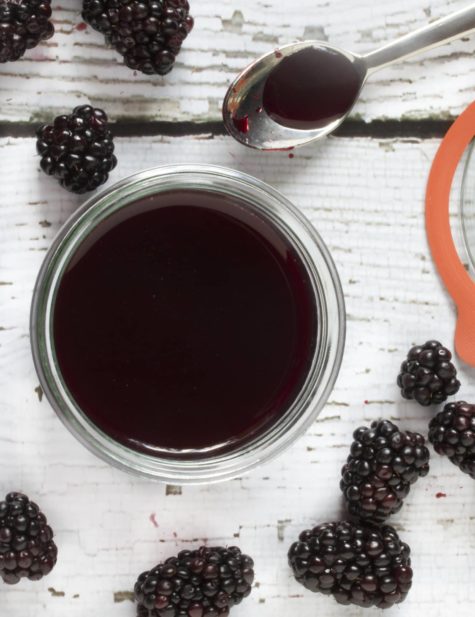

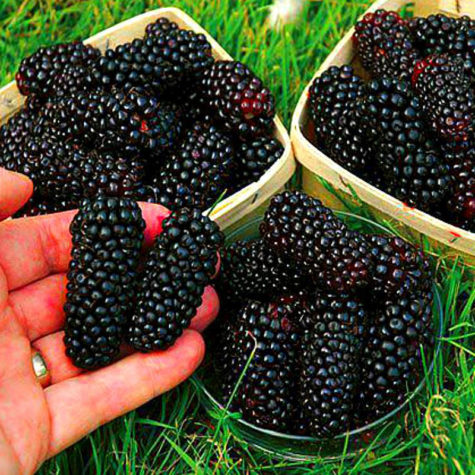
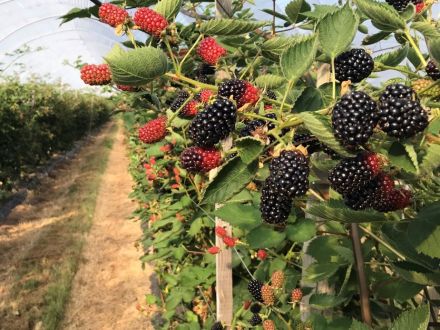
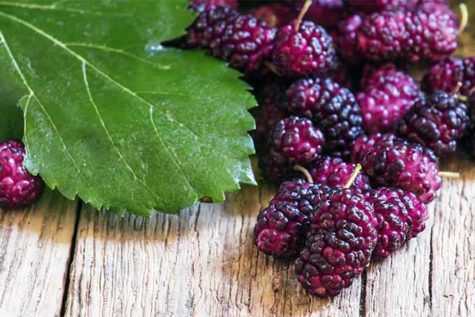
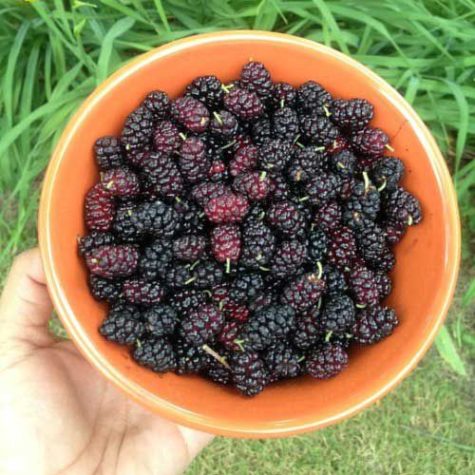
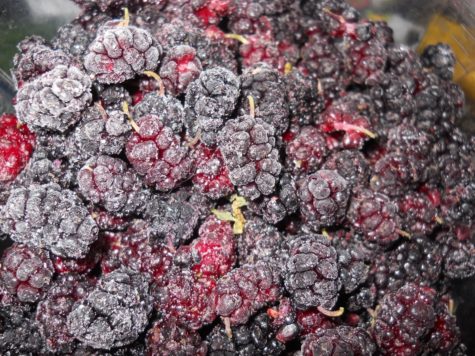
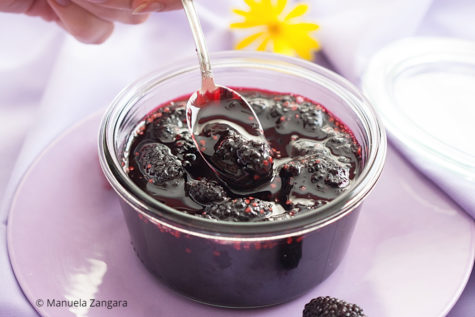
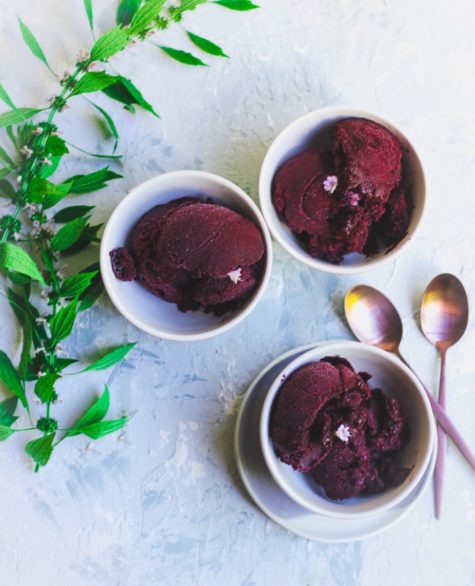

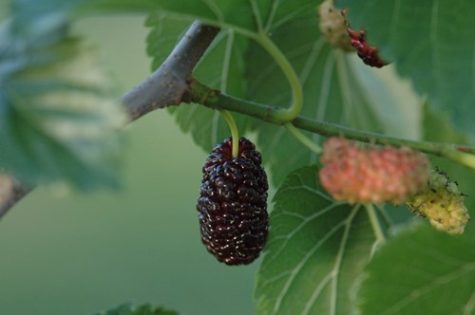
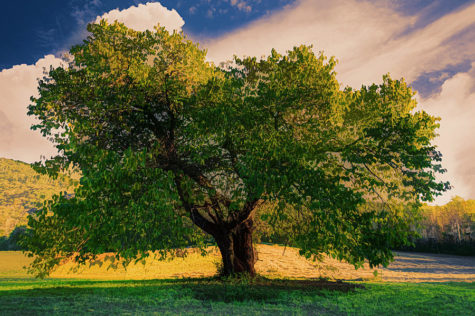

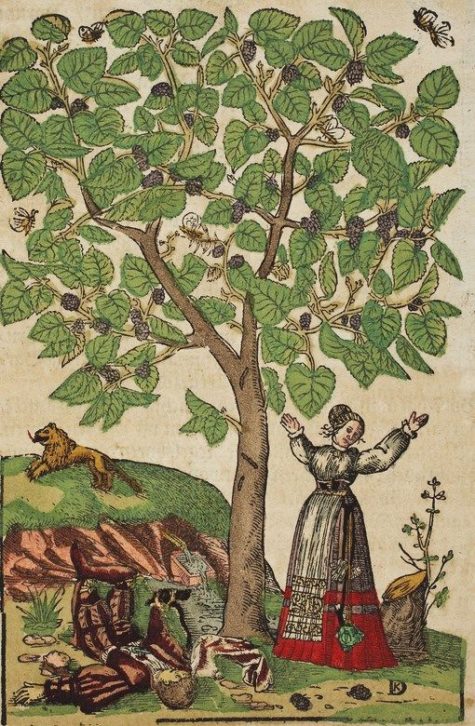
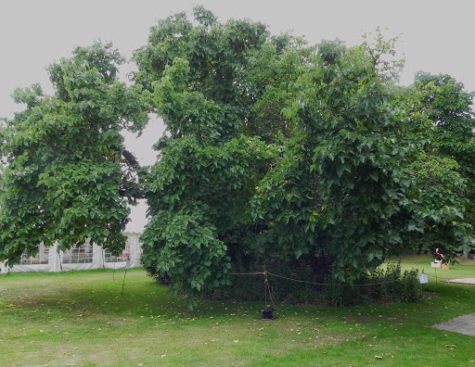
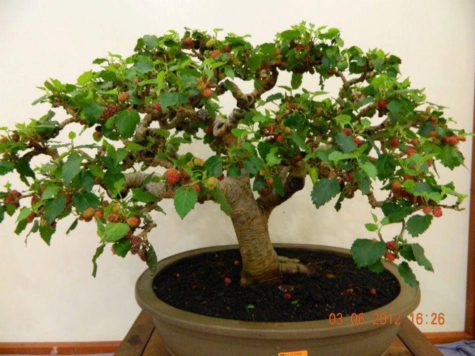



Nice read! This article definitely gave me a better understanding about the benefits and uses of mulberry. Thanks a lot for posting!